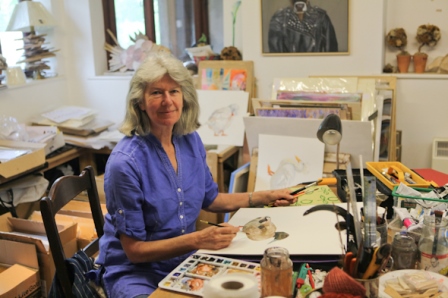Writing a non-fiction book is quite different from a novel and so is the process of getting it published.

The first thing to realize is that you don’t have to actually write the book until you secure a contract with a publisher. What you do need to do is form a comprehensive plan of the layout of the book and what it will contain. Publishers work to strict page requirements; for instance, 160 or 192 with nothing in between, so will want to know how many pages you expect your book to cover. They will also be keen to know if the book is suitable for translation and, in particular, if it will be appropriate for the American market, as well as who it is aimed at. Do not worry if there are a myriad other works on your particular subject; this means it is a popular topic and if you can bring a new slant to the theme, it will have a ready audience.
To find a publisher for your first book, you need to look in the Writers' & Artists' Yearbook and find a company that covers the kind of book you have in mind. Email them and get the name of the commissioning editor and approach him/her direct with your idea. You may not have immediate success, but keep trying and if you don’t receive a reply, send a follow-up email.
If you can illustrate the book yourself (or provide publication quality photographs), all to the good – it will save the publisher the expense of having to buy in photos or employ an illustrator. Photos will all have copyright so you can’t just use any that you find on websites without specific permission. As far as artworks go, all artists have different styles but obviously for a non-fiction book clear illustrations will be required and the publisher will want to see some samples. Also bear in mind that your artworks will remain at the publishers for up to a year.
My first book was a ‘commissioned’ book where I had approached a publisher with an idea and was then offered the chance to co-write the book. In this case, you receive a one off payment but the editor will tell you what is required and do a certain amount of the work such as sourcing photos etc. If this book miraculously turns into a world bestseller, you still will not receive a further penny! Most books however will be on a royalty basis and the percentage you receive will have to be negotiated between you and your publisher. You should receive an advance and this will have to be paid off by your royalties before you earn anything further.
A lot of getting your work published is being in the right place at the right time – or approaching a commissioning editor with something they may already be vaguely considering. My first editor told me how, while working on a series of books about smallholding, he had taken his sons to London and bought a book on bee keeping which he was reading on the train home. One of his sons asked why he was reading it and he replied that he was considering a beekeeping book for the series. A lady sitting in the compartment said ‘I’m a journalist and I keep bees – do you have a writer?’ She got the job.
Celia has taken part in group, private and national exhibitions and has won several prizes including the 2005 Royal Institute of Painters in Watercolour (RI) medal and the Windsor & Newton Prize at the RWS Open Exhibition 2010. Celia’s first book, The Illustrated Guide to Chickens, was published in April 2010 with a foreword by HRH The Prince of Wales and she has since written 3 other Illustrated Guides which all include rare and endangered breeds and Celia feels strongly that they should not be lost to future generations but hopes that by painting them she may do a little to help preserve them. She has also written An Illustrated Country Year and is working on a companion edition, An Illustrated Coastal Year, to be published in August 2015. Find out more on her website.
Find out more about titles and buy the latest releases from Celia Lewis at Bloomsbury.com.
Comments